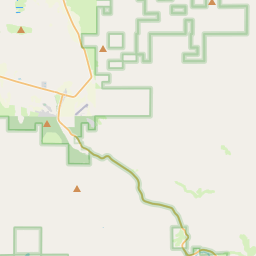Inscription
A City Built on Trains and Automobiles
Nevada's alliance with the Union during the Civil War was important not only for the mineral resources of the Comstock Lode but because the state held portion of the transcontinental transportation and communication lines, the California Trail and the newly constructed telegraph.
After the Civil War ended in 1865, the transcontinental railroad work began. From Sacramento the Central Pacific Railroad was extended eastward over Sierra Nevada range and along the Truckee River Canyon to approach Lake's crossing (near here). By offering land in exchange for the placement of a depot station, Myron Lake convinced railroad officials to build the main station for the Truckee Meadows near his bridge crossing. In 1868, the railroad auctioned 400 town lots and within a month more than 100 houses and businesses were established - the city of Reno was born.
In 1869, construction started on a regional railroad, called the Virginia and Truckee (V&T); that would connect the Comstock to Reno and eventually extend its lines south to Carson City to transport products from the dairy trade from Carson Valley to Reno and on to San Francisco.
America Goes Mobile
During the 1910s and 1920s, highways were built so people could drive in their new automobiles across the
country. At the same time, Reno became famous for quick divorces and easy marriages. In 1913, a private consortium led by Carl G. Fisher decided to build the transcontinental Lincoln Highway from New York to San Francisco. Reno and Carson City became important junctions along the highway which would become (U.S. 50).
Constructed 1925, the Victory Highway (U.S. 40) ran from Reno through the Truckee Canyon over the Sierra Nevada range and into Sacramento.
Reno has served as a commercial redistribution point for Western manufacturers and distributors for the past 120 years. Today, Reno's convenient location and transportation routes have spurred the warehousing and logistic industries, which continue to be the underlying current of economic development in the region.
Nevada's alliance with the Union during the Civil War was important not only for the mineral resources of the Comstock Lode but because the state held portion of the transcontinental transportation and communication lines, the California Trail and the newly constructed telegraph.
After the Civil War ended in 1865, the transcontinental railroad work began. From Sacramento the Central Pacific Railroad was extended eastward over Sierra Nevada range and along the Truckee River Canyon to approach Lake's crossing (near here). By offering land in exchange for the placement of a depot station, Myron Lake convinced railroad officials to build the main station for the Truckee Meadows near his bridge crossing. In 1868, the railroad auctioned 400 town lots and within a month more than 100 houses and businesses were established - the city of Reno was born.
In 1869, construction started on a regional railroad, called the Virginia and Truckee (V&T); that would connect the Comstock to Reno and eventually extend its lines south to Carson City to transport products from the dairy trade from Carson Valley to Reno and on to San Francisco.
America Goes Mobile
During the 1910s and 1920s, highways were built so people could drive in their new automobiles across the
country. At the same time, Reno became famous for quick divorces and easy marriages. In 1913, a private consortium led by Carl G. Fisher decided to build the transcontinental Lincoln Highway from New York to San Francisco. Reno and Carson City became important junctions along the highway which would become (U.S. 50).
Constructed 1925, the Victory Highway (U.S. 40) ran from Reno through the Truckee Canyon over the Sierra Nevada range and into Sacramento.
Reno has served as a commercial redistribution point for Western manufacturers and distributors for the past 120 years. Today, Reno's convenient location and transportation routes have spurred the warehousing and logistic industries, which continue to be the underlying current of economic development in the region.
Details
| HM Number | HM24VW |
|---|---|
| Tags | |
| Placed By | Nevada Historical Society |
| Marker Condition | No reports yet |
| Date Added | Monday, January 22nd, 2018 at 1:01pm PST -08:00 |
Pictures
Locationbig map






| UTM (WGS84 Datum) | 11S E 258495 N 4378907 |
|---|---|
| Decimal Degrees | 39.52588333, -119.80970000 |
| Degrees and Decimal Minutes | N 39° 31.553', W 119° 48.582' |
| Degrees, Minutes and Seconds | 39° 31' 33.18" N, 119° 48' 34.92" W |
| Driving Directions | Google Maps |
| Area Code(s) | 775 |
| Which side of the road? | Marker is on the right when traveling North |
| Closest Postal Address | At or near Tahoe - Pyramid Bikeway, Reno NV 89501, US |
| Alternative Maps | Google Maps, MapQuest, Bing Maps, Yahoo Maps, MSR Maps, OpenCycleMap, MyTopo Maps, OpenStreetMap |
Is this marker missing? Are the coordinates wrong? Do you have additional information that you would like to share with us? If so, check in.
Nearby Markersshow on map
Maintenance Issues
- Is this marker part of a series?
- What historical period does the marker represent?
- What historical place does the marker represent?
- What type of marker is it?
- What class is the marker?
- What style is the marker?
- Does the marker have a number?
- What year was the marker erected?
- This marker needs at least one picture.
- Can this marker be seen from the road?
- Is the marker in the median?

Comments 0 comments